At Mt Refuge, we believe crafting handwoven rugs is naturally an arduous process, crafted with warmth yet relentless effort to provide cultural significance to your space. Our journey has continuously evolved over time – from a small carpet shop in Nepal to a factory and most recently being able to display our craft on the biggest global stage of art. Here’s a glimpse of the hard work behind the scenes:
Artist Rendering & Graphing
Our limited edition collaborative artist collection requires coordination with the artists to establish designs. Once the artist finalizes the concept, the design is passed to our graphing department – a critical stage that ensures the vision will translate flawlessly into the finished carpet. Graphing involves:
- Sizing: Determining the exact dimensions of the rug while maintaining design integrity.
- Material Assignment: Selecting the appropriate Tibetan wool, silk, or blends to highlight texture, color, and durability.
- Color Mapping: Ensuring that every hue matches the artist’s intent and flows across the design seamlessly.
This stage acts as a preview to production. Any errors in graphing can mislead the entire weaving process, hence our artisans work meticulously to check every knot and motif against the graph. Only when the graph meets the highest standards of accuracy does the carpet officially move into production, where skilled weavers bring the design to life by hand.
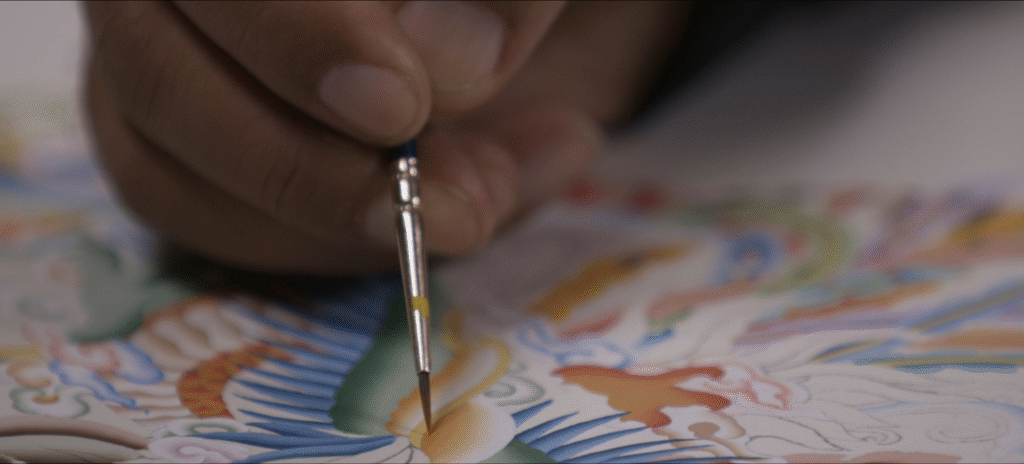
1. Sourcing
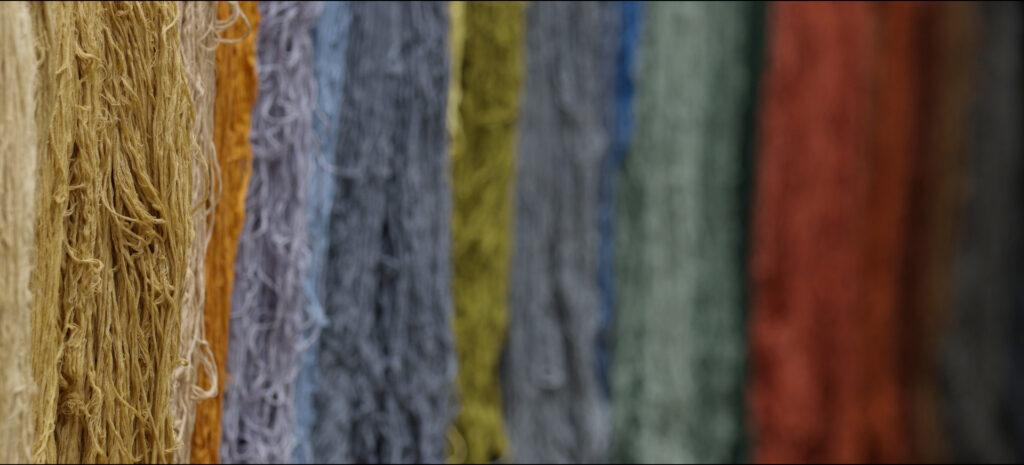
The rug making journey begins with the meticulous selection of our premium raw materials. We prioritize Highland Tibetan wool known for its long fibers, rich lanolin content, and natural resilience. This wool is sourced directly from local herders who practice sustainable grazing methods. Additionally, we incorporate fine Chinese Silk on a durable Cotton Warp & Weft, adding texture, luster, and longevity to our carpets.
You can read more about our materials here.
2. Dyeing
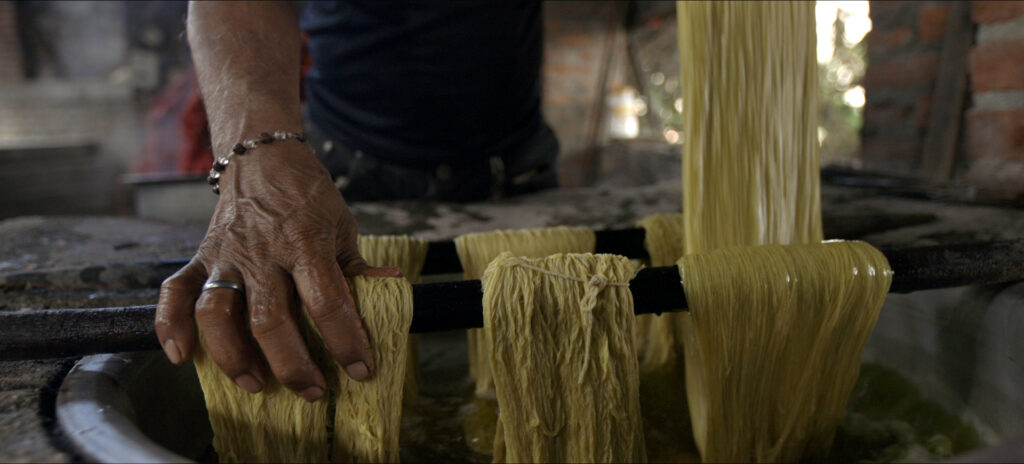
Color is paramount in our designs, and we achieve our vibrant and nuanced hues through traditional hand-dyeing techniques. We source natural dyes from local plants and minerals, immersing the yarn in a carefully controlled process to achieve the desired shade. Our hand-dyeing methods result in vibrant colors and subtle nuances that achieve unique color variations and depth of hues, adding richness and character to every piece.
3. Weaving
Using the graph perfected and materials selected and dyed, skilled artisans bring the concept to life. Each carpet is hand-knotted on a loom, a process that demands patience, precision, and deep knowledge passed down through generations.
The weaving process begins with preparing the loom, a carefully calibrated setup that ensures tension and alignment remain consistent throughout production. Artisans follow the graph meticulously, knot by knot, row by row, translating the artist’s vision into a tangible textile.
Key elements of this stage include:
- Knot Density: Luxury carpets achieve high knot density, resulting in sharper patterns, richer texture, and exceptional durability.
- Material Blending: Combining Tibetan wool with silk or other fibers at specific points enhances visual depth and tactile quality.
- Continuous Quality Checks: Supervisors monitor each section to catch deviations early, preserving the integrity of the design.
For us the weaving stage is a living dialogue between the artisan and the artwork, where every hand movement contributes to the final masterpiece. This was the very reason we showcased our loom in the TEFAF Maastricht 2022 exhibition, displaying the historical significance of the loom in Nepal’s first display on the 59th Venice Biennale (2022). This careful, handcrafted process ensures that each Mt Refuge carpet is not only a decorative object but a lasting work of art that embodies both contemporary design and centuries of Himalayan craftsmanship.
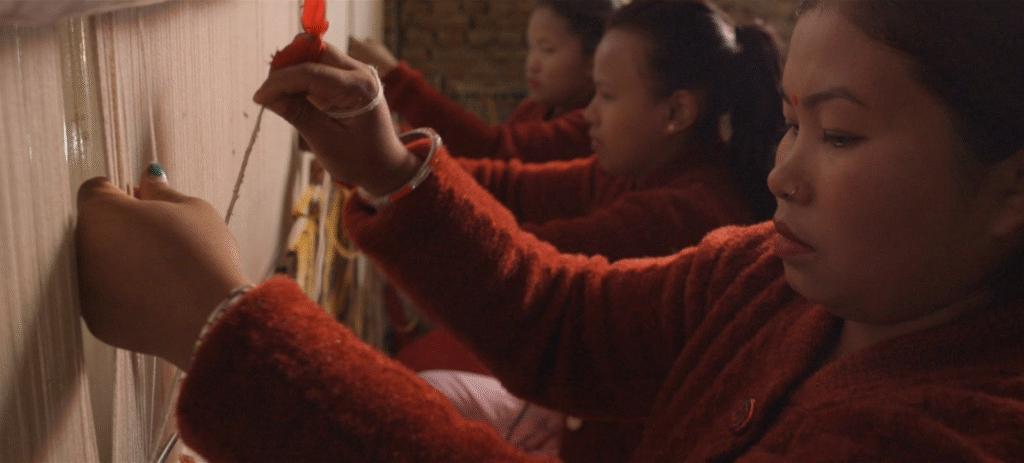
4. Washing & Stretching
Once the knotting is complete, the carpet undergoes a thorough washing process to remove any remaining impurities and enhance the natural luster of the wool and silk. Through careful cleaning, we remove impurities and allow the natural luster of the wool to shine. Following the washing, the carpet is meticulously trimmed, stretched, and finished to ensure uniform pile height and flawless detailing.
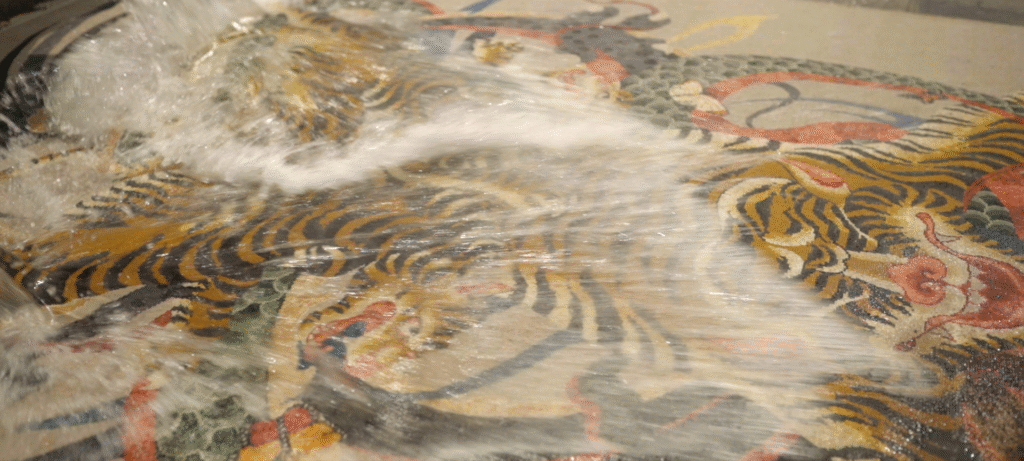
5. Finishing
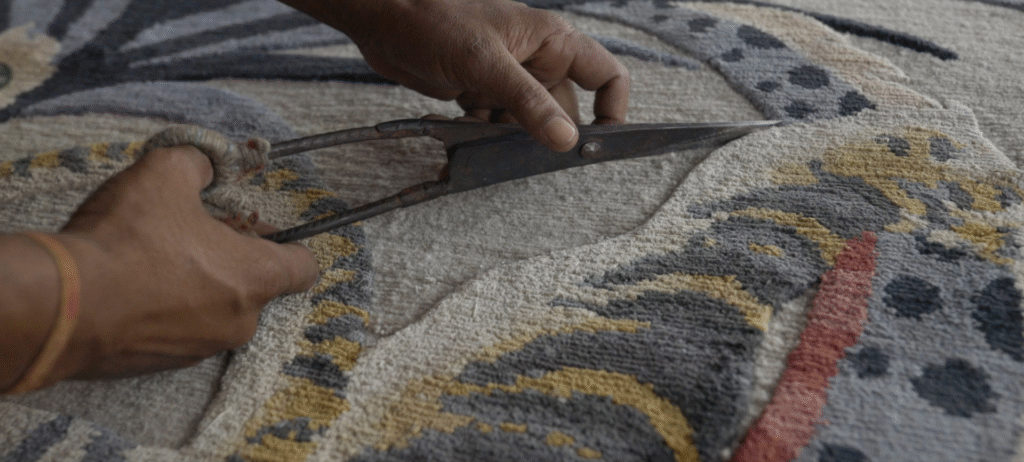
Following the washing, the carpet is meticulously trimmed, stretched, and finished to ensure uniform pile height and flawless detailing. The result is a luxury, limited-edition carpet that is as much a piece of contemporary art as it is a finely crafted Himalayan textile.


